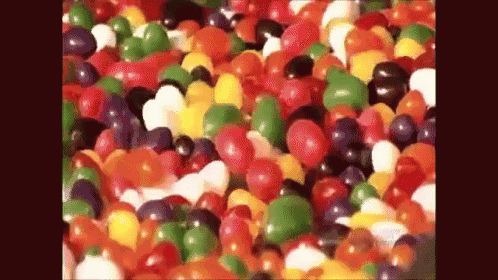
Jan Jones Eats Jumbo Jellybeans with Jam.
Rationale: This lesson will help children identify /j/, the phoneme represented by J. Students will learn to recognize /j/ in spoken words by learning a meaningful representation (teeth together and lips pursing out) and the letter symbol j, practice finding /j/ in words, and apply phoneme awareness with /j/ in phonetic cue reading by distinguishing rhyming words from beginning letters.
Materials: Primary paper and pencil; chart with "Jan Jones eats jumbo jellybeans with jam"; drawing paper and crayons; Dr. Seuss's ABC (Random House, 1963); word cards with JUG, JUST, JIVE, BOY, JOKE, JET; assessment worksheet identifying pictures with /j/ (URL below).
Procedures: 1. Say: Our written language is a secret code. The tricky part is learning what letters stand for—the mouth moves we make as we say words. Today we're going to work on spotting the mouth move /j/. We spell /j/ with letter J. if you look at J, it looks like a fishing hook.
2. Let's try it, /j/, /j/, /j/. Notice where your teeth are? (Touching together). When we say /j/, we blow air between our teeth with our lip pursed out.
3. Let me show you how to find /j/ in the word enjoy. I'm going to stretch enjoy out in super slow motion and listen for/j/. ee-nn-j-o-yy. Slower: eee-nn-jjjj-o-o-y. There it was! I felt my teeth touch together and blow air.
4. Let's try a tongue twister [on chart]. Jan Jones eats jumbo jellybean with jam. Everybody say it three times together. Now say it again, and this time, stretch the /j/ at the beginning of the words. Jjjan Jjjones eats jjjumbo jjjjellybeans with jjjam. Try it again, and this time break it off the word: /j/ an /j/ ones eats /j/umbo /j/ellybeans with /j/am.
5. [Have students take out primary paper and pencil]. We use letter J to spell /J/. Let's write the lowercase letter j. Start just above the sidewalk. Start to make a little straight line down and make a little hook at the bottom. Remember to dot your j at the fence. I want to see everybody's j. After I put a smile on it, I want you to make nine more just like it.
6. Call on students to answer and tell how they knew: Do you hear /j/ in jog or hog? Jelly or butter? major or minor? subject or session? jump or run? Say: Let's see if you can spot the mouth move /j/ in some words. Put your teeth together and purse out you lips really hard if you hear /j/: Jan, jumps, over, the, jar, of, jelly.
7. Say: "Let's look at an alphabet book. Dr. Seuss tells us about a funny creature whose name starts with J. Can you guess?" Read page 16, drawing out /j/. Ask children if they can think of other words with /j/. Ask them to make up a silly creature name like Jerry Jigger Joopling Jopper. Then have each student write their silly name with invented spelling and draw a picture of their silly creature. Display their work.
8. Show JUG and model how to decide if it is jug or hug: The J tells me to put my teeth together, /j/, so this word is jjj-ug, jug. You try some: JET: jet or pet? JUST: just or must? JIVE: Jive or hive? BOY: joy or boy? JOKE: joke or poke?
9. For assessment, distribute the worksheet. Students are to complete the partial spellings and color the pictures that begin with J. Call students individually to read the phonetic cue words from step #8.
Reference:
https://murraba.wixsite.com/lessondesigns2017/emergent-literacy
Assessment Worksheet:
https://www.superteacherworksheets.com/phonics-beginningsounds/letter-j_WFQZF.pdf?up=1466611200
